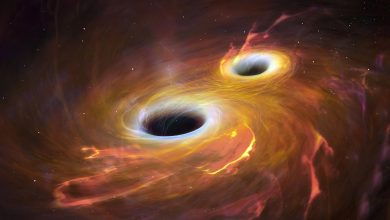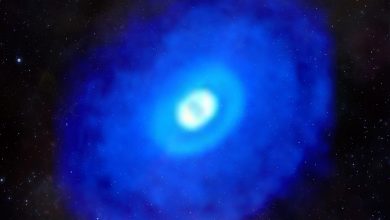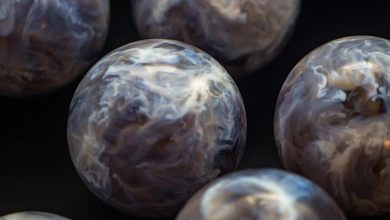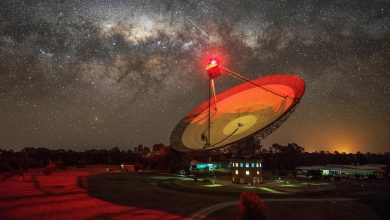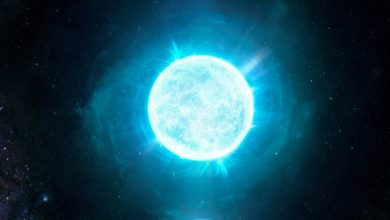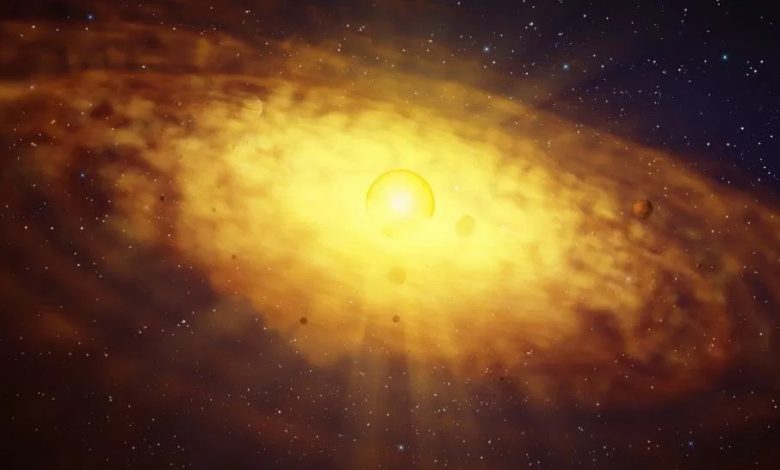
High-precision noble gas analyses indicate that solar wind particles from our primordial Sun were encased in the Earth’s core over 4.5 billion years ago. Researchers from the Institute of Earth Sciences at Heidelberg University have concluded that the particles made their way into the overlying rock mantle over millions of years. The scientists found solar noble gases in an iron meteorite they studied. Because of their chemical composition, such meteorites are often used as natural models for the Earth’s metallic core.
The rare class of iron meteorites make up only five percent of all known meteorite finds on Earth. Most are fragments from inside larger asteroids that formed metallic cores in the first one to two million years of our Solar System. The Washington County iron meteorite now being studied at the Klaus Tschira Laboratory for Cosmochemistry at the Institute of Earth Sciences was found nearly 100 years ago. Its name comes from the location in Colorado (USA) where it was discovered. It resembles a metal discus, is six cm thick, and weighs approx. 5.7 kilograms, according to Prof. Dr Mario Trieloff, head of the Geo- and Cosmochemistry research group.
Researchers made the discovery by analyzing ancient particles within an iron meteorite, which came from a space rock that had an iron core, just like Earth does now, making the meteorite a good proxy for our planet’s innards. The meteorite had “striking excesses of solar helium and neon,” which are noble gases, or gases that are colorless, odorless, tasteless and nonflammable and occupy group 18 on the periodic table, the researchers wrote in the study.
Past research has tied the exposure of solar wind — the stream of plasma and charged particles that flows from the sun — to an elevation in helium and neon and the ratios in which they appear. So, it’s likely that when the solar system’s planets were still forming, the solar wind irradiated this meteorite with noble gas particles, which then became embedded in the meteorite’s metals, the researchers said. Likewise, “Earth’s core may have incorporated solar noble gases,” the researchers wrote in the study.
Over millions of years, these noble gases likely spread from the core and into Earth’s mantle, the layer between the core and the upper crust, the team also discovered.
The meteorite, which was discovered in 1927 in Washington County, Colorado, falls into a rare class of “ungrouped” iron meteorites that make up just 5% of known meteorites discovered on Earth. Most of these meteorites are mere fragments of larger asteroids, which formed metallic cores during the solar system’s first 1 million to 2 million years.
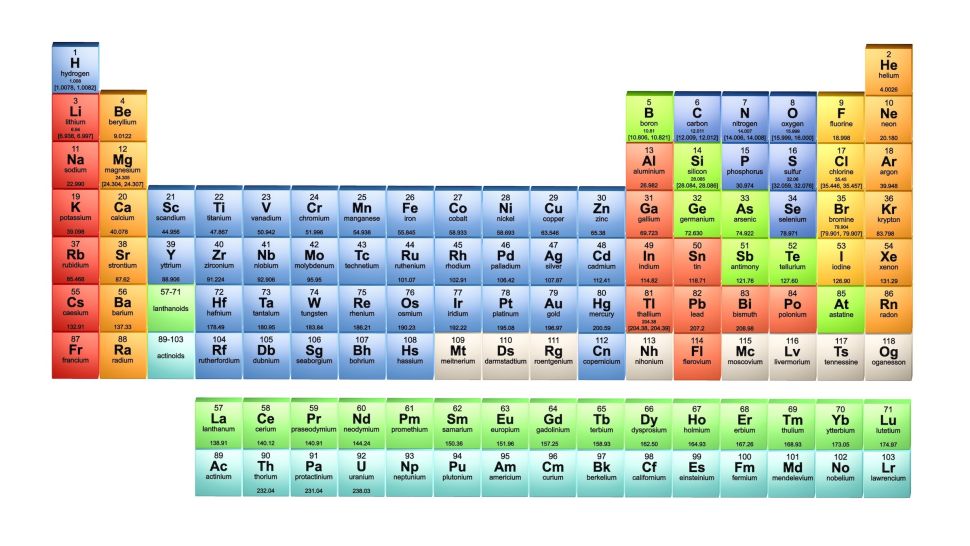
The Washington County iron meteorite, however, is larger than most meteorites in its class. Originally, it looked like a metal discus that was about 5.9 inches by 7.8 inches (15 by 20 centimeters) in diameter and 2.3 inches (6 cm) thick and weighed about 12.5 lbs. (5.7 kilograms), according to a 1928 report in the journal American Mineralogist.
In the 1960s, research found that the Washington County meteorite contained “a remarkable excess” of unusual helium and neon isotopes, variations of elements that have a different number of neutrons in their nuclei. In 1984, another study showed that these isotopes had ratios similar to those seen in solar wind.
For the new study, the researchers studied just a few of the Washington County meteorite chunks, including one 1.1-inch-long (3 cm) slab. The team used a noble gas mass spectrometer to measure the ratio of noble gas isotopes. The helium and neon isotopic ratios were typical for those from the solar wind, the researchers confirmed.
Figuring out which of the noble gases in the meteorite came from the solar wind versus other sources, however, is a tricky business. For instance, noble gases can originate from other places in the cosmos.
“The measurements had to be extraordinarily accurate and precise to differentiate the solar signatures from the dominant cosmogenic noble gases,” study first author Manfred Vogt, a postdoctoral researcher at the Institute of Earth Sciences at Heidelberg University in Germany, said in a statement.
It’s likely that the solar-wind particles in the early solar system became trapped in the precursor materials that eventually became the asteroid, the team said. Then, these noble gases likely dissolved in the liquid metal, which later became the asteroid’s solid metal core.
Earth’s iron core probably went through a similar process when it was forming, the researchers said. To investigate this idea further, the team consulted their record of solar-wind helium and neon isotopes found in igneous rock from volcanic eruptions on oceanic islands, such as Hawaii in the Pacific and Réunion in the Indian Ocean.
The rocks they studied came from a special kind of volcano that is powered by plumes deep within Earth’s mantle. These plumes have high solar gas ratios, which makes them different from shallow mantle volcanic activity seen at midocean mountain ridges, which have low solar gas ratios, the researchers said.
Now, the researchers have multiple threads of evidence indicating that Earth has solar noble gases in its core and mantle. In effect, the iron-cored Washington County meteorite has solar noble gases, so it’s likely that Earth’s iron core does too. And solar noble gases are found in volcanic rock that originated deep in the mantle, suggesting that some of the solar particles hanging out in Earth’s core have since migrated to the mantle, the researchers found.
Their findings appear to confirm the assumption that the solar noble gases in mantle plumes originate in the planet’s core — and hence signify solar wind particles from the centre of the Earth. “Just one to two percent of a metal with a similar composition as the Washington Country meteorite in the Earth’s core would be enough to explain the different gas signatures in the mantle,” states Dr Vogt. The Earth’s core may therefore play a previously underappreciated active role in the geochemical development of the Earth’s mantle.
If Earth’s core had “just 1% to 2% of a metal with a similar composition as the Washington Country meteorite,” that could “explain the different gas signatures in the mantle,” Vogt said. This finding suggests that the core influences the mantle’s geochemistry in a previously unknown way, the researchers said.
The study was published online May 14 in the journal Communications Earth & Environment.

